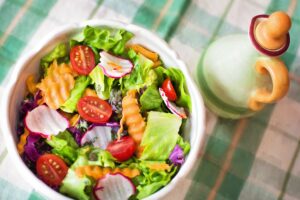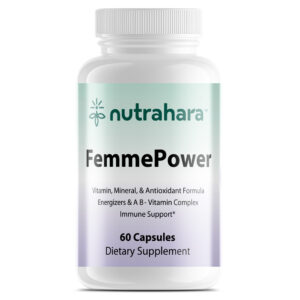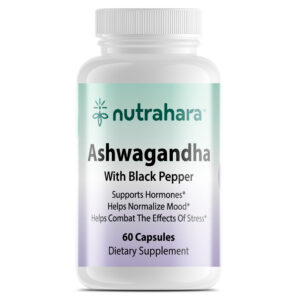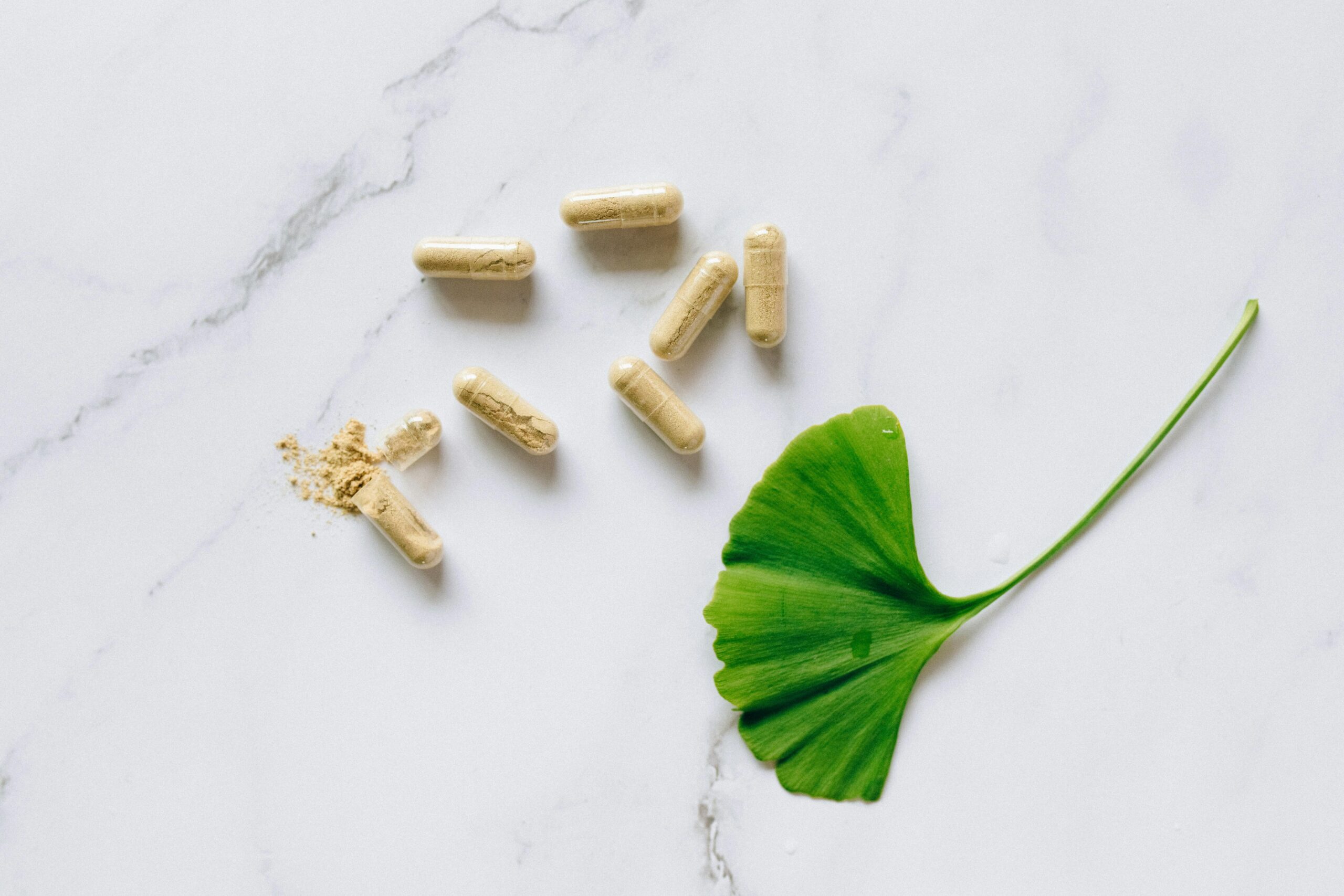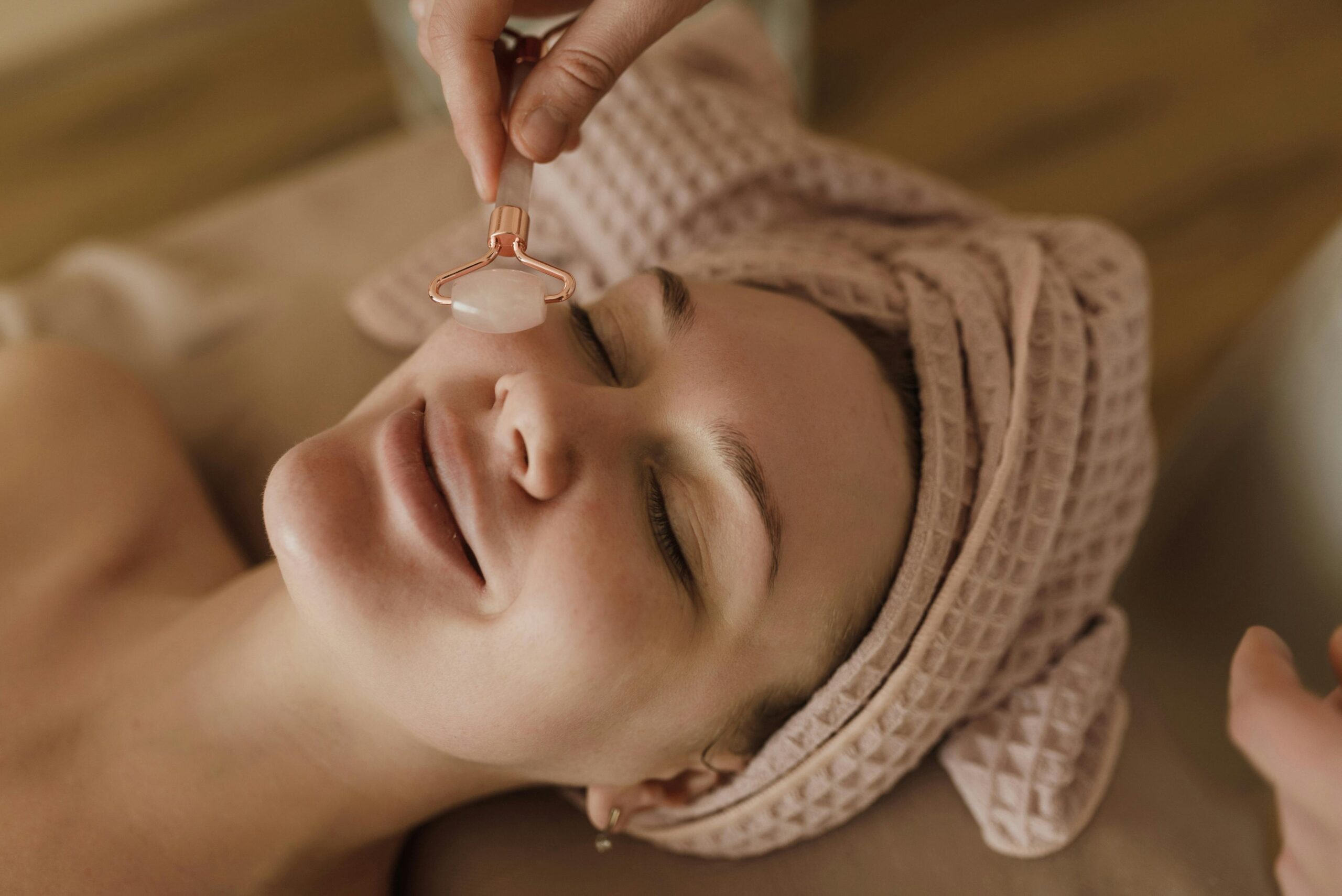
Nutrahara Blog
Nutrahara Blog
How to Prevent Breast Cancer Naturally
1. Introduction: How to Prevent Breast Cancer Naturally
Breast cancer is a growing concern among women, yet many discussions around prevention focus solely on genetics and medical screenings. However, emerging research highlights the power of lifestyle choices in reducing breast cancer risk. While hereditary factors contribute, only 5-10% of breast cancer cases are directly linked to inherited genetic mutations, leaving the vast majority influenced by diet, exercise, environmental exposures, and stress levels.
Preventing breast cancer isn’t about waiting for warning signs; it’s about building a strong internal defense system. A well-nourished body, an active lifestyle, and conscious stress management can help regulate hormones, reduce inflammation, and enhance detoxification processes, all of which play a significant role in breast health.
Most mainstream advice overlooks how small, daily habits—such as choosing the right foods, engaging in mindful movement, and limiting toxic exposures—can cumulatively make a profound impact on breast cancer prevention. From the nutrients in your morning smoothie to the chemicals in your personal care products, every choice contributes to your overall risk or resilience.
This article goes beyond common prevention tips, offering practical strategies rooted in nutrition, movement, mindfulness, and holistic health. You’ll discover how to empower yourself with proactive measures that not only help prevent breast cancer but also enhance your overall well-being and longevity.
2. Understanding Breast Cancer and Its Risk Factors
2.1 What Is Breast Cancer?
Breast cancer occurs when abnormal cells grow uncontrollably in breast tissue. These cells can form a tumor, which may spread to other areas of the body if left untreated. The most common types include:
- Ductal carcinoma in situ (DCIS) – A non-invasive cancer where abnormal cells are found in the milk ducts.
- Invasive ductal carcinoma (IDC) – The most common type, where cancer cells spread beyond the milk ducts.
- Invasive lobular carcinoma (ILC) – A cancer that begins in the milk-producing glands and can spread.
2.2 Common Risk Factors
Several factors can increase the risk of breast cancer. While some factors, such as genetics, cannot be changed, lifestyle and environmental choices play a critical role in prevention.
Genetic and Biological Factors:
- Family history of breast cancer – Women with first-degree relatives who have had breast cancer are at higher risk.
- BRCA1 & BRCA2 gene mutations – These genetic mutations significantly increase breast cancer risk.
- Age and hormonal factors – The risk increases with age and prolonged exposure to estrogen.
Lifestyle and Environmental Factors:
- Diet and nutrition – High consumption of processed foods, sugar, and unhealthy fats increases risk.
- Physical inactivity – Sedentary lifestyles contribute to obesity, which is linked to breast cancer.
- Alcohol consumption – Studies show that limiting alcohol intake can reduce the risk of breast cancer.
- Environmental toxins – Exposure to endocrine disruptors in plastics, cosmetics, and pesticides can influence hormone levels.
- Chronic stress and inflammation – Prolonged stress leads to hormonal imbalances that may trigger cancer development.
2.3 How To Prevent Breast Cancer?
While no method guarantees complete prevention, adopting a healthy lifestyle can drastically reduce the risk. Simple, proactive steps like improving diet, engaging in regular exercise, and managing stress can enhance breast health and overall well-being.
According to the Mayo Clinic, incorporating habits such as limiting alcohol intake and staying physically active can play a vital role in breast cancer prevention. Read more on their insights here: Breast Cancer Prevention.
By making conscious decisions regarding nutrition, movement, and environmental exposures, women can take charge of their health and significantly lower their risk of breast cancer.
3. The Role of Diet in Breast Cancer Prevention
3.1 Anti-Inflammatory Foods for Breast Health
A diet rich in antioxidants, fiber, and omega-3 fatty acids can help lower inflammation, regulate hormones, and improve overall immunity. Chronic inflammation has been linked to increased cancer risk, making it essential to consume foods that support a balanced immune response.
3.2 Top 7 Superfoods to Prevent Breast Cancer
Here are seven nutrient-dense foods that support breast health:
- Leafy greens (spinach, kale) – Packed with antioxidants like vitamin C and beta-carotene, which help neutralize free radicals.
- Berries (blueberries, strawberries) – Contain polyphenols and flavonoids that combat oxidative stress and inflammation.
- Cruciferous vegetables (broccoli, cauliflower, Brussels sprouts) – Rich in sulforaphane, a compound known to help detoxify harmful estrogen metabolites.
- Turmeric – Contains curcumin, a powerful anti-inflammatory compound with potential cancer-fighting properties.
- Flaxseeds – High in lignans and omega-3 fatty acids, which help balance estrogen levels.
- Wild-caught salmon – Provides essential omega-3 fatty acids, which reduce inflammation and support cellular health.
- Garlic and onions – Contain sulfur compounds that may help reduce cancer risk by promoting detoxification.
3.3 Foods to Avoid
Certain foods have been linked to an increased risk of breast cancer due to their ability to promote inflammation, disrupt hormonal balance, or introduce carcinogens into the body. Avoiding these foods can significantly contribute to breast health.
Harmful Foods to Limit or Avoid:
- Processed meats (bacon, sausages, hot dogs) – Contain preservatives and nitrates linked to cancer risk.
- Sugary foods and beverages – High sugar intake contributes to insulin resistance and inflammation.
- Refined carbohydrates (white bread, pasta, pastries) – Cause blood sugar spikes that can promote cancer cell growth.
- Excessive alcohol consumption – Even moderate alcohol intake has been associated with increased estrogen levels and breast cancer risk.
- Trans fats (found in fast food and hydrogenated oils) – Promote inflammation and may contribute to tumor growth. (Content previously written and now restored)
4. How Exercise Helps in Breast Cancer Prevention
4.1 The Link Between Physical Activity and Cancer Risk
Regular exercise helps regulate insulin, estrogen, and immune function, which are all linked to breast cancer risk.
4.2 Best Workouts for Women to Prevent Breast Cancer
- Strength training – Builds lean muscle, which improves metabolism and hormone balance.
- Cardio exercises (walking, jogging, cycling) – Improve circulation and detoxification.
- Yoga and Pilates – Enhance flexibility, reduce stress, and promote lymphatic drainage.
4.3 5 Simple Ways to Stay Active Daily
- Take the stairs instead of the elevator.
- Walk 10,000 steps a day.
- Stretch every morning.
- Do 10-minute home workouts.
- Use a standing desk at work. (Content previously written and now restored)
5. The Power of Yoga and Meditation in Reducing Cancer Risk
5.1 How Yoga Supports Breast Health
Yoga enhances flexibility, improves circulation, and helps with lymphatic drainage, which is essential for removing toxins from the body. Additionally, yoga reduces cortisol levels, a stress hormone that, when chronically elevated, can contribute to hormonal imbalances.
5.2 Meditation for Hormonal Balance and Stress Reduction
Meditation encourages mindfulness and relaxation, reducing the physiological effects of stress. Chronic stress can lead to inflammation and estrogen dominance, both of which are linked to breast cancer. Just 10 minutes of deep breathing or guided meditation daily can have significant benefits.
5.3 Best Yoga Poses for Breast Health
- Bridge Pose (Setu Bandhasana) – Opens the chest and stimulates the thymus gland.
- Cobra Pose (Bhujangasana) – Improves blood circulation to the breast tissue.
- Legs Up the Wall (Viparita Karani) – Enhances lymphatic drainage and reduces fatigue. (Content previously written and now restored)
6. Dietary Supplements That May Help Prevent Breast Cancer
6.1 Key Vitamins and Minerals for Breast Health
- Vitamin D – Helps regulate cell growth and reduces inflammation.
- Magnesium – Aids in hormonal balance and supports cellular function.
- Selenium – Provides antioxidant protection against free radicals.
- Omega-3 Fatty Acids – Reduces inflammation and supports immune function.
6.2 Herbal Supplements with Anti-Cancer Properties
- Curcumin (from Turmeric) – Has powerful anti-inflammatory and cancer-fighting properties.
- Green Tea Extract – Rich in catechins, which may help slow cancer cell growth.
- Flaxseed Extract – Supports hormone balance and may reduce estrogen dominance.
- Ashwagandha – Helps lower cortisol levels and enhances immune function.
6.3 How to Choose High-Quality Supplements
- Look for third-party tested supplements to ensure purity and potency.
- Choose organic and non-GMO products whenever possible.
- Avoid supplements with fillers, additives, or artificial ingredients. (Content previously written and now restored)
7. Essential Oils for Breast Health and Cancer Prevention
7.1 How Essential Oils Support Breast Health
Essential oils contain powerful plant-based compounds known for their anti-inflammatory, antioxidant, and hormone-balancing properties. When used correctly, they can help promote cellular health, reduce stress, and support the body’s natural detoxification processes.
7.2 Top Essential Oils for Breast Cancer Prevention
- Frankincense Oil – Contains boswellic acids, which have been shown to support cellular health and reduce abnormal cell growth.
- Lavender Oil – Known for its calming effects, lavender helps regulate stress hormones, reducing chronic inflammation that may contribute to cancer.
- Clary Sage Oil – Contains phytoestrogens that help balance hormone levels, particularly estrogen dominance, which is a risk factor for breast cancer.
- Rosemary Oil – Supports liver function, helping the body detoxify harmful estrogen metabolites that can increase cancer risk.
- Lemon Oil – High in antioxidants, it supports the immune system and helps eliminate toxins from the body. (Content previously written and now restored)
8. Lifestyle Habits to Reduce Breast Cancer Risk
8.1 Managing Stress and Mental Health
Chronic stress affects hormone levels, weakens the immune system, and contributes to inflammation, which can increase the risk of breast cancer. Managing stress through relaxation techniques and mindfulness can promote overall well-being.
Ways to Reduce Stress:
- Practice meditation – Even 10 minutes a day can help lower cortisol levels and promote emotional balance.
- Engage in deep breathing exercises – Helps activate the body’s relaxation response and reduces anxiety.
- Keep a gratitude journal – Focusing on positivity can shift the mind away from stressors.
- Get sufficient sleep – Aim for 7-9 hours per night to support hormonal balance and cellular repair.
8.2 Reducing Exposure to Environmental Toxins
Toxins found in everyday products can disrupt the endocrine system and contribute to hormone imbalances that may increase cancer risk. Avoiding these harmful substances can support breast health.
Ways to Limit Toxin Exposure:
- Use natural skincare and cosmetics – Choose products free from parabens, phthalates, and synthetic fragrances.
- Avoid plastic containers – Opt for glass or stainless steel to reduce exposure to BPA and other chemicals.
- Use organic cleaning products – Many commercial cleaners contain harmful chemicals that can impact health.
- Filter drinking water – Ensure clean water by using a high-quality filtration system to remove toxins.
8.3 Maintaining a Healthy Weight
Obesity is linked to increased estrogen levels, which can contribute to breast cancer development. Maintaining a balanced weight through proper diet and regular exercise can reduce the risk.
Ways to Maintain a Healthy Weight:
- Eat a nutrient-rich diet – Focus on whole foods, lean proteins, and fiber-rich vegetables.
- Stay hydrated – Drinking enough water supports metabolism and helps regulate appetite.
- Exercise regularly – Engage in a mix of cardio and strength training to boost metabolism.
- Limit processed foods and sugars – Reducing sugar intake can help prevent insulin resistance, which is linked to cancer risk.
8.4 The Importance of Regular Screenings
Early detection of breast cancer greatly increases the chances of successful treatment. Scheduling regular screenings and self-examinations can help catch potential issues early.
Breast Cancer Screening Recommendations:
- Perform monthly breast self-exams – Helps detect lumps or unusual changes in breast tissue.
- Schedule routine mammograms – Women over 40 should have annual mammograms or as recommended by their doctor.
- Stay informed about genetic testing – Women with a family history of breast cancer may benefit from BRCA gene testing.
Incorporating these lifestyle habits into daily routines can significantly lower the risk of breast cancer and promote overall health and longevity.
9. Conclusion
Breast cancer prevention is not about fear – it’s about empowerment through proactive choices. By integrating mindful lifestyle habits, women can take charge of their health and significantly reduce their risk of developing breast cancer. The power of nutrition, exercise, stress management, and environmental awareness cannot be understated.
Key Takeaways for Breast Cancer Prevention:
- Adopt a nutrient-dense diet rich in antioxidants, fiber, and healthy fats.
- Engage in regular physical activity to balance hormones and support overall wellness.
- Incorporate yoga and meditation to manage stress and improve emotional resilience.
- Use essential oils and natural remedies to enhance well-being and hormonal balance.
- Limit exposure to environmental toxins by choosing organic and non-toxic household products.
- Maintain a healthy weight and stay hydrated to support optimal body function.
- Schedule regular screenings and self-examinations for early detection.
Preventing breast cancer is not a single action but a lifelong commitment to self-care and well-being. Every small step taken toward healthier food choices, movement, mindfulness, and toxin reduction adds up to create a more resilient body and mind. By making these conscious decisions, women can live with confidence, vitality, and a greater sense of control over their health.
A holistic, empowered approach to wellness allows women to focus not just on preventing disease, but on thriving in every aspect of life.
Written by the Nutrahara Team
This article was developed by the Nutrahara team of nutrition scientists and naturopaths, who specialize in formulating safe, effective, and science-backed supplements for women’s health. Every ingredient we use is carefully selected to support your body’s unique needs—naturally. Follow us on LinkedIn for expert insights and updates on our latest wellness solutions.

